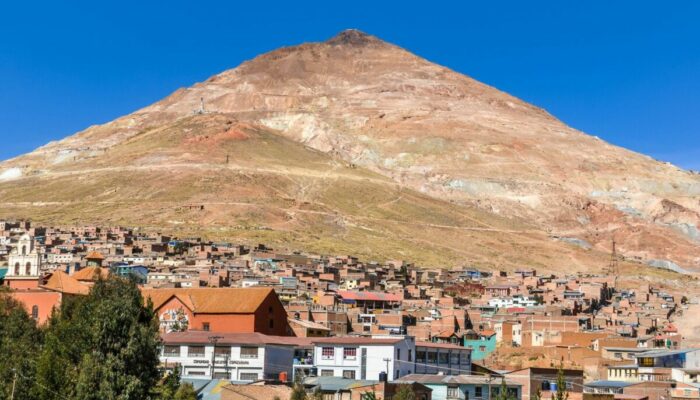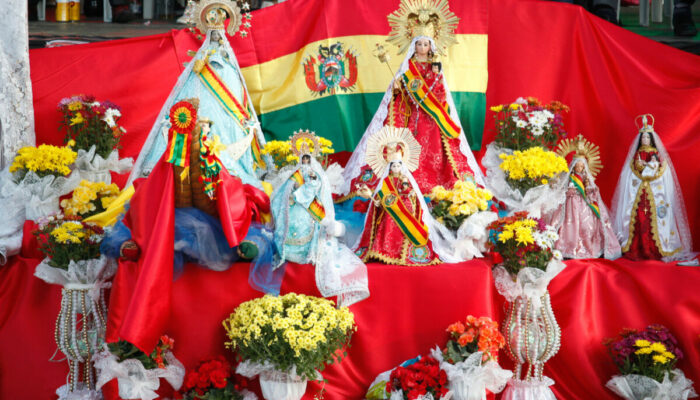You’ve probably already heard of coca, the sacred plant native to north-western South America, which is particularly popular in Bolivia! But how much do you know about it? How is it used, and why is it so important and controversial in the country?
In July, Thaki Voyage decided to focus on this age-old, ancestral herb in preparation for August, the month of the Pachamama, as many rituals using this plant are dedicated in honor of Mother Earth.
This leaf, a powerful symbol of Bolivian cultural identity, invites us to reflect on the country’s traditional societies as we explore its coca fields!
What is the coca leaf?
Coca comes from a shrub that can grow up to 3 metres tall, with green leaves and white and yellow flowers that turn into red berries when ripe.
Found in the Amazon region of Chapare, coca grows more in the steep Yungas region north of La Paz. It is in the sacred mountains and valleys of the Yungas, on the border between the Andes and the Amazon basin, that coca is harvested, as well as several tropical fruits, coffee, tobacco and cocoa. Coca has been cultivated since pre-Columbian times in this region of lush vegetation, where the first settlers discovered gold.
Coca can be consumed in a variety of ways, including infused as a tea (mate de coca) or chewed. The Aymara word Picchar refers to the act of chewing coca. It is used specifically for chewing the leaf.
This action is similar to chewing tobacco, since all you have to do is form a small coca pellet and put it in your cheek. The effect is both anaesthetic and energizing.
Locals claim that the alkaloids present in coca leaves are beneficial to health. Coca is used to combat fatigue, pain and the effects of altitude. So it’s highly likely that you’ll try it when you’re in Bolivia!
What’s more, it’s also a natural appetite suppressant, making it a plant with multiple properties, still widely consumed and produced in the country today.
the coca leaf as part of bolivia's heritage
Coca has long been an essential part of people’s lives. Specific references to the use of coca have been found as far back as the earliest cultures. The Tiwanacotas, for example, used it in great ceremonies dedicated to their deities. As for the Charka-Qaraqara, who owned farmland in the Río Grande, Tiraque, Totora and Mizque valleys, they controlled its production, trade and ritual use.
Coca continued to be used in Inca rituals. Indeed, coca played an essential role in all the religious rituals of the Altiplano peoples, with offerings dedicated to the Apus, the mountain spirits, the Inti sun and the Pachamama. It was also used in war ceremonies.
After the Spanish invasion, coca became an everyday item for the Indians, especially the mitayos, as it was used to encourage warriors in dance and battle.
However, the Church recognized coca as an invention of the devil, considering it diabolical because of its repeated use in various rituals.
Today, it is estimated that around 1.2 million kilos of coca leaves are consumed in the traditional way in Bolivia every month, i.e. chewed, infused or used in various ceremonies.
Controversy: coca, the hot topic
In recent years, the controversial vision of coca has been at the heart of numerous controversies. The soda and pharmaceutical industries have used it extensively, diverting it from its traditional use. This misuse of the leaf is also reflected in the manufacture of cocaine. As demand continues to grow, local production is exploding.
Despite the controversies, coca growers in the Yungas region are a political force for the government, particularly during the presidency of Evo Morales, who encouraged alternative uses for the plant in the manufacture of medicines and soft drinks.
A former coca grower, the ex-leader wanted to establish a legal coca-based products industry, because in Bolivia, the plant remains a symbol of the country. It was for this reason that the government decided to help farmers in the highlands to develop the cultivation of this natural plant, and to wage a battle against drugs. In the words of Evo Morales: “Coca, yes, cocaine, no!”
It’s important to stress that the coca leaf and cocaine are two completely different things, and that cocaine has nothing to do with the sacred plant! Even so, while coca remains legal and common in Bolivia, it is still illegal outside the country’s borders, so don’t bring any back after your stay, as there will be no difference between the coca leaf and the drug on your return to France.
To go further...
Would you like to know more about coca? The small Coca Museum in La Paz focuses on the role of this sacred leaf, and its original and misappropriated uses. Take a tour!
Whether used for medicinal or ritual purposes, the coca leaf is highly revered in Bolivia. Despite the abuses its use can entail, it is part of the country’s heritage and culture, and its health benefits are well established! It will come in very handy during your various climbs and to ward off altitude sickness. Discover it soon on your expedition to Bolivia with Thaki Voyage!
Mathilde Leroux



